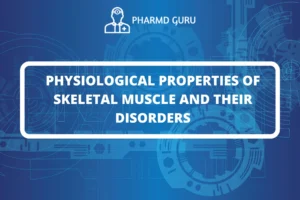Cells are the fundamental building blocks of all living organisms. Understanding the structure of a cell and the functions of its components is vital to comprehend how life processes occur. In this article, we will delve into the fascinating world of cell biology, exploring the intricacies of a cell’s structure and the significance of its various components.
SCROLL DOWN TO THE BOTTOM OF THE PAGE FOR ACTUAL NOTES
1. What is a Cell?
A cell is the smallest structural and functional unit of an organism, capable of carrying out all life processes. From simple single-celled organisms to complex multicellular beings like humans, cells are the foundation of life.
2. The Cell Membrane
The cell membrane, also known as the plasma membrane, is the outermost covering of a cell. It acts as a barrier, controlling the movement of substances in and out of the cell. Additionally, the cell membrane plays a vital role in cell signaling and communication with its environment.
3. Cytoplasm
The cytoplasm is a gel-like substance that fills the space between the cell membrane and the nucleus. It houses various cellular structures and organelles, where many essential metabolic reactions take place.
4. The Nucleus
The nucleus is often referred to as the “control center” of the cell. It contains the cell’s genetic material in the form of DNA, which regulates the cell’s activities and passes on hereditary information to the next generation.
5. Endoplasmic Reticulum (ER)
The endoplasmic reticulum is a network of membranes involved in protein synthesis, folding, and transport within the cell. It can be rough (with ribosomes) or smooth (without ribosomes), depending on its function.
6. Ribosomes
Ribosomes are small, spherical structures responsible for protein synthesis. They read the genetic code from the DNA and assemble amino acids into polypeptide chains, forming proteins essential for various cellular processes.
7. Golgi Apparatus
The Golgi apparatus functions as a processing and packaging center for proteins and lipids. It modifies proteins and prepares them for transportation to their specific destinations within or outside the cell.
8. Mitochondria
Mitochondria are often referred to as the “powerhouses” of the cell because they produce adenosine triphosphate (ATP), the primary source of cellular energy through cellular respiration.
9. Lysosomes
Lysosomes are small vesicles containing digestive enzymes. They break down waste materials, cellular debris, and foreign substances, playing a crucial role in cellular recycling and waste management.
10. Vacuoles
Vacuoles are membrane-bound sacs responsible for storing various substances such as water, ions, and nutrients. In plant cells, vacuoles are particularly essential for providing turgidity and maintaining cell structure.
11. Cytoskeleton
The cytoskeleton is a network of protein filaments that provide structural support to the cell, help maintain its shape, and facilitate cell movement and division.
12. Cell Wall
The cell wall is a rigid outer layer found in plant cells, fungi, and some bacteria. It provides additional structural support and protection to the cell.
13. Chloroplasts
Chloroplasts are unique organelles found in plant cells, where photosynthesis occurs. They capture sunlight and convert it into chemical energy, enabling plants to produce glucose and oxygen.
14. Cell Communication
Cell communication involves a complex network of signals and receptors that enable cells to interact and coordinate their activities. This communication is vital for multicellular organisms to function as cohesive units.
15. Conclusion
In conclusion, the structure of a cell is a marvel of nature’s engineering, with each component playing a crucial role in maintaining life. From the cell membrane, which regulates traffic in and out of the cell, to the nucleus, the repository of genetic information, and the organelles like mitochondria and chloroplasts responsible for energy production, every part of the cell has its significance. Understanding the structure and functions of cells is fundamental to biology and provides insights into the complexity of life itself.
ACTUAL NOTES




